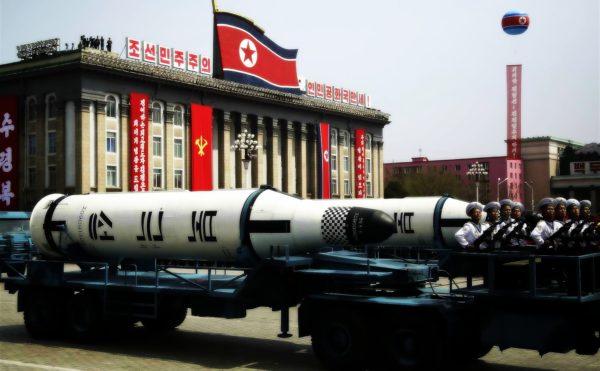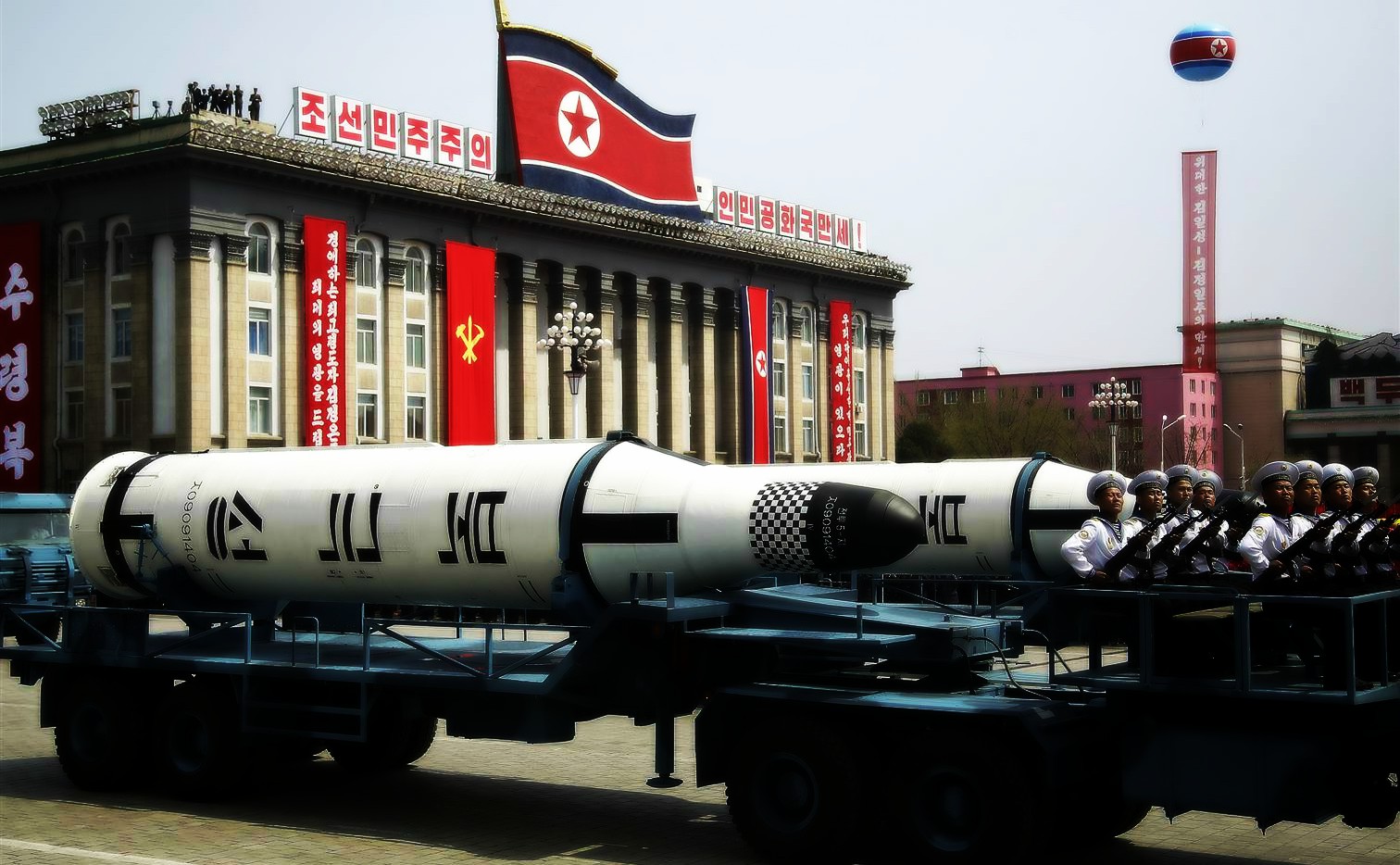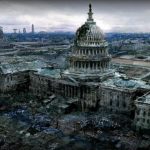
Credit: NBC News
Imagine a weapon that possesses the ability to decimate entire cities and kill millions of people with one push of a button – this is what a nuclear warhead can do. In the post-Cold War era, the U.S. asserted itself as the global leader in halting the spread of weapons of mass destruction (WMDs) after the U.S. Department of Defense’s 1993 “Bottom Up Review,” which identified the spread of nuclear weapons as the top military threat facing the U.S.[1] While the path to nuclear nonproliferation has been a focus for previous U.S. administrations, the threat of nuclear warfare has reached a new level in light of North Korea’s recent display of its nuclear capabilities. Specifically, the regime in Pyongyang – the heart of the Democratic People’s Republic of Korea – claimed it had successfully tested a hydrogen bomb that could be attached to a ballistic missile with the range to reach the U.S. [2] While this measure of firepower has yet to be confirmed by any external actors, this sort of provocation still raises huge concerns for the Trump administration, as well as the rest of the world. This is because the scale of the hydrogen bomb’s effects exceeds that of the atomic bombs used on Japan during World War II, which killed hundreds of thousands of people.[3]
While the concern regarding nuclear proliferation is readily apparent – the potential for global destruction through the use of WMDs – the political vendetta here seems to be embedded within the framework of U.S. foreign policy. The divisiveness over this foreign policy issue stems from the two different camps that exist in international affairs – militant internationalists and cooperative internationalists, which can be simplified to the opportunity cost of choosing diplomacy over confrontation. Historically, the U.S. has grappled with constructing a comprehensive approach in deterring North Korea from both building up a nuclear arsenal, as well as launching a nuclear attack on its enemies: the U.S. and South Korea. For the past two decades, U.S. administrations have employed inconsistent approaches when it comes to dealing with North Korea. As a result of this inconsistency, the North Korean regime has been able to progress forward in its pursuit of an effective nuclear program.[4] This has led to the creation of these two camps that each present different perspectives.
Militant internationalists, often referred to as hardliners, advocate policy that involves tactical military engagement. For example, after Pyongyang announced its withdrawal from the 1968 Nuclear Nonproliferation Treaty in 2003, the more “hawkish” U.S. policy analysts advocated for a policy of containment, even if that required the deployment of troops. On the other hand, those individuals who propose a cooperative strategy assert that the U.S., as well South Korea, should refrain from any action that may provoke an attack from North Korea. This sort of attitude helped to draft the Sunshine Policy, or formally known as the “Comprehensive Engagement Policy towards North Korea,” which has mostly been in place from 1998-2008, and states that the South will not attempt to infringe upon the political sovereignty of the North as long as the North does not jeopardize the security of the South or its allies. [5]
Although current legislation surrounding U.S.-North Korea relations as it pertains to nuclear proliferation is not clearly defined, Trump’s actions and words indicate which direction he is taking. In response to the recent threat issued by North Korea’s leader Kim Jong-un, in he which he alluded to a strike on Guam, President Trump employed his most antagonistic language to date, stating that North Korea will be “met with fire and fury and frankly power, the likes of which this world has never seen before.”[6] This comment sparked controversy, as President Trump’s engagement with North Korea differs significantly from his predecessors during the Sunshine Policy era.
Trump’s policy options at this point are as follows:
- Take a “hawkish” approach and deploy military troops to the region (this is what he seems to be leaning towards).
- Use the UN structure to implement more economic sanctions.
- Engage in bilateral or multilateral negotiations with North Korea and all relevant actors.
On one hand, this hawkish approach gives some policy analysts hope, as they seek an alternative approach to dealing with the Pyongyang regime. Considering that the last three U.S. presidential administrations failed to neutralize the threat of North Korea’s nuclear program, the emergence of the hardliner sentiment should not come as a surprise. Diplomatic frameworks have been established between the U.S. and North Korea, but they have never sustained over time. For example, the Clinton administration successfully negotiated a framework of agreement with North Korea in 1994, which resulted in the closure of the Yongbyon nuclear power plant in exchange for oil deliveries.[8] However, this framework broke down and the Yongbyon facility was reinstated because the U.S. government relied on North Korea’s commitment to the agreement rather than dismantling the equipment entirely.
However, on the other hand, a counterargument can be made against the hardliner approach. Democratic Senator Chuck Schumer of New York referred to Trump’s comments as “reckless,” claiming that such threats could escalate the conflict rather than deter North Korea from engaging in armed conflict. In the field of international relations, this phenomenon is known as “brinkmanship” – the art of pursuing a dangerous policy to the threshold of confrontation, so that one party can gain an advantage in the negotiation process. The most apparent display of brinkmanship was the Cuban missile crisis of 1962 in which the Soviet’s placement of nuclear missiles in Cuba nearly escalated the conflict into a full-blown nuclear war. Therefore, when policy analysts are attempting to craft effective policy as it relates to nuclear proliferation, it is important to not cross the threshold of confrontation. Furthermore, the monetary cost of any sort of military engagement, such as the deployment of troops, can never be overlooked. In the case of entanglement with Korea, the U.S. will likely have to spend billions, which could instead be used more efficiently within the domestic sphere.
Based on the arguments from the two opposing camps – the hardliners and the cooperative internationalists – it is evident that there is no easy policy solution to the nuclear crisis with North Korea. However, the best course of action is a policy that employs aspects of both sides. The U.S. should continue to pursue diplomatic negotiations with North Korea, but the administration needs to recruit other global actors, namely China, who has a favorable relation with Kim Jong Un and can exert enough pressure on the regime to adhere to its demands. If China responds to America’s request to cut trade, it could devastate North Korea’s economy, which heavily relies on Chinese fossil fuels.
Take Action
Given the strained relationship between the U.S. and North Korea, it seems improbable that any action taken by the average American will persuade Pyongyang to disarm its nuclear arsenal. However, as an engaged citizen, it is important to become educated on the issue. Visit http://www.heritage.org/asia/report/north-korea-nuclear-and-missile-issues-whats-the-solution to learn more about the North Korean nuclear crisis, as well hear from both sides of the debate regarding U.S. intervention.
Furthermore, if one desires to play a more active role in helping to determine U.S. foreign policy as it relates to this issue, join one of the two opposing camps. Change.org is currently organizing a petition that promotes the establishment of a Korean Peace treaty: (https://www.change.org/p/president-trump-usa-sign-a-korean-peace-treaty-now).
References:
[1] Mazarr, M. J. (1995). Going Just a Little Nuclear: Nonproliferation Lessons from North Korea. International Security,20(2), 92. doi:10.2307/2539230
[2] Rucker, P. (2017, September 03). ‘We’ll see,’ Trump says on potentially attacking North Korea over its nuclear test. Retrieved September 12, 2017, from https://www.washingtonpost.com/politics/trump-calls-north-koreas-nuclear-test-very-hostile-and-dangerous-scolds-south-korea/2017/09/03/a1429980-90a1-11e7-8754-d478688d23b4_story.html?utm_term=.424d743843c8
[3] Hayden, M. E. (n.d.). What is a hydrogen bomb? A look at the latest potential threat from North Korea. Retrieved September 12, 2017, from http://abcnews.go.com/International/hydrogen-bomb-latest-potential-threat-north-korea/story?id=49596835
[4] http://www.jstor.org/stable/42704651?seq=1#page_scan_tab_contents
[5] http://large.stanford.edu/courses/2017/ph241/min2/
[6] https://www.washingtonpost.com/politics/trump-tweets-news-report-citing-anonymous-sources-on-n-korea-movements/2017/08/08/47a9b9c0-7c48-11e7-83c7-5bd5460f0d7e_story.html?utm_term=.38029499ec41
[7] http://www.huffingtonpost.com/young-professionals-in-foreign-policy/three-presidents-facing-n_b_9335546.html




